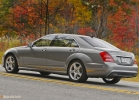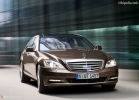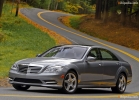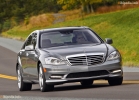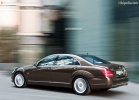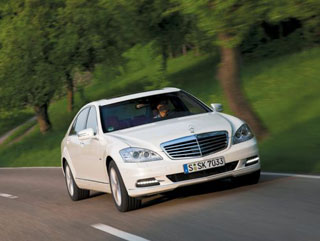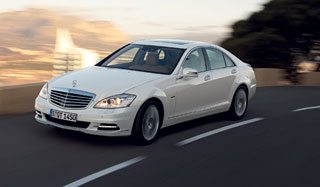Mercedes Benz S-class W221 test drive since 2009 sedan
Mercedes-Benz S 400 Hybrid
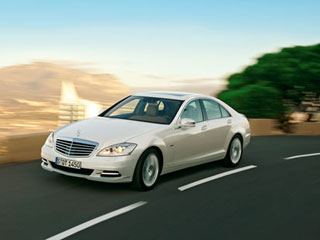 Mercedes-Benz S-class facies cannot be called radical. But when it comes to such a car, any nuance deserves close attention. Moreover, other of these nuances are drawn to the sensation. For example, the appearance of the version of S 400 Hybrid
Mercedes-Benz S-class facies cannot be called radical. But when it comes to such a car, any nuance deserves close attention. Moreover, other of these nuances are drawn to the sensation. For example, the appearance of the version of S 400 Hybrid A little more than three years passed with the debut of the S-class with the body W221, and its appearance is slightly updated. This is not even facelift, but a new set of cosmetics and jewelry. The shape of the front bumper and lateral mirrors is slightly changed. The grille of the radiator is sustained. The headlights were brought in the latest fashion, languid translucent eyelids appeared. The rear lights consist of 52 LEDs. Elegant LED thongs can now be pulled on the front bumper as daylight
The choice of pragmatics
S -class is the most successful car in one of the most prestigious market segments. Since 1951, 3.3 million probe models with the marking of S (SONDER - special) has been diverged around the world. If a respected person wants to indicate his status without raising questions or comments from the outside, he simply transplanted to a S-class. However, the matter is not only prestigious. Oddly enough, it sounds, modern Mercedes is the choice of pragmatics. For all their pathos, representative sedans from Stuttgart are convenient not only in the sense of the softness of the seats, but also in terms of everyday use. Simply put, the totality of its characteristics and running qualities, a set of functions and systems that are offered to customers of the S-class are not so much a standard as a guideline for their segment, a level that determines its current state.
In 2009, the set of such systems includes Intelligent Light System headlights, which themselves know how, where and when to shine, an active suspension, a system for monitoring the degree of fatigue of the driver Attion Assist, recognizing the state of drowsiness by the nature of the steering manipulations, the Linguatronic system of voice control navigation, telephone and audio system, Night View Assist Plus night vision system, SplitView double screen technology, allowing the driver and front passenger to see different information on the same display, the Blind Spot Assist control system and many other, more familiar systems like active headrests, rear chambers, parking sensors, chip keys, hard drive for music and navigation.
Important news for Russia: from June 1, the issue of the legality of the frequencies of Mercedes radar in our open spaces has been resolved. This makes it possible to use a number of systems that have long become abroad-from the adaptive cruise control of the Dis-Tronic Plus, which maintains a certain speed and a safe distance to the front of the car (up to a complete stop), to the emergency braking system Pre-Safe Brake, Which, in the absence of adequate reactions of the driver, begins to automatically slow down the car with the threat of an inevitable collision.
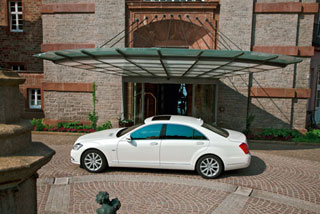 And here is the promised sensation: among the modifications that will be delivered to Russia, a hybrid version appeared. The Japanese have long been indulging with electricity, including in the premium segment. Now Mercedes considered that the electrified version is necessary for the representative of the representative class. However, the Germans are not yet inclined to go along this path too far.
And here is the promised sensation: among the modifications that will be delivered to Russia, a hybrid version appeared. The Japanese have long been indulging with electricity, including in the premium segment. Now Mercedes considered that the electrified version is necessary for the representative of the representative class. However, the Germans are not yet inclined to go along this path too far. Soft option
The S 400 HYBRID version is based on the usual modification of S 350 with a gasoline V6 with a volume of 3.5 liters. True, the engine was finalized in terms of the combustion chamber and the operating modes of phases of gas distribution, due to which its power compared to S 350 increased by 7 hp. and amounted to 279 hp
The internal combustion engine helps an electric motor, the characteristics of which themselves are not too impressive. Its power is only 15 kW (20 hp). True, he develops a decent traction - 160 nm. But the main thing is an unusual, ring-shaped shape of the generator, which turned out to be compact enough to fit in the place of the flywheel between the motor and the standard 7-band automatic transmission. There are no changes in the transmission device, the car layout, the body design.
The principle of operation is simple. When braking, the engine works as a generator, stocking current in the battery. When acceleration, the internal combustion engine helps, but the help in movement is barely noticeable. Therefore, the main function of the generator motor is the restart of the gasoline engine, which is jammed at speeds below 15 km/h and starts again when removing the leg from the brake pedal. That is, we have the most mild version of hybridization, which is, in fact, the already fairly common start-stop system with somewhat expanded capabilities. The S 400 does not know how to ride an electric protrusion. Unlike such a luxury competitor as Lexus LS 600H, who, although not for long, is only a couple of minutes, but still capable of stretching without an internal combustion engine, has a more powerful (165 hp) electrical component, a much more cunning electromechanical transmission and all -wheel drive . True, he has to carry a whole suitcase of batteries under the rear seat.
No changes in the design of the hybrid S-class, as already mentioned, were needed. Weight increased by only 60 kg. In general, there is no difference between a driver or passenger between a hybrid and a gasoline version. Probably, this was one of the goals of the creators of the car. Only when starting the motor on the move is a small vibration.
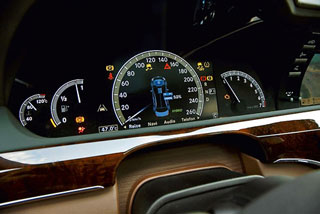 The main difference between a hybrid with a hood raised is an unusual type of battery in a sparkling steel case. In principle, this battery is the main technological highlight of the hybrid S-class-it is the latest lithium-ion battery. It is much more effective than traditional batteries and at the same time compact. Having a capacity of 7 Ah and a voltage of 120 V, the lithium-ion battery on the S-class occupies a volume of only 13 liters and is placed in a standard battery nest. As the indication on the dashboard clearly demonstrates, this battery quickly recharge: a few touching the brake pedal is enough, and the charging level grows before our eyes. Its power guarantees from any problems when starting in frost. Resource issues have been resolved: the battery is designed for 600 thousand charging cycles or ten years of operation.
The main difference between a hybrid with a hood raised is an unusual type of battery in a sparkling steel case. In principle, this battery is the main technological highlight of the hybrid S-class-it is the latest lithium-ion battery. It is much more effective than traditional batteries and at the same time compact. Having a capacity of 7 Ah and a voltage of 120 V, the lithium-ion battery on the S-class occupies a volume of only 13 liters and is placed in a standard battery nest. As the indication on the dashboard clearly demonstrates, this battery quickly recharge: a few touching the brake pedal is enough, and the charging level grows before our eyes. Its power guarantees from any problems when starting in frost. Resource issues have been resolved: the battery is designed for 600 thousand charging cycles or ten years of operation. But all this has the opposite side. Such a battery should constantly be in a midnight state. With complete charging, it will not be able to save energy during braking, that is, the meaning of its installation is lost, and with complete discharge, it fails. In addition, lithium-ion batteries are so powerful that they are prone to overheating, which is fraught with fire and even an explosion. Hence the need for a separate air conditioning system, a beautiful metal case and electronics, which makes sure that the charge level does not exceed 90% and does not fall below 30%. The steering wheel and air conditioner have an electric drive to work with the ICE turned off.
In a word, there are enough nuances. And what's in the plus? Fuel consumption compared with the usual S 350 decreased on average by 21% with the same dynamic characteristics. Not bad! That's the just question, how important is all this for the premium segment, say, in Russia? After all, the difference with S 350 is almost 700 thousand rubles. Apparently, the Germans also have certain doubts, which is why they decided to limit themselves to a rather modest degree of hybridization, although they already have much more advanced systems in production. For example, the Mercedes ML 450 Hybrid is already produced with a very cunning transmission, where two powerful electric motors are built into a regular machine. The creators call this system perfect. However, the possibilities of the soft concept of the S-class are also not exhausted. On the way, a 45 and 65 kW generators with a capacity of 45 and 65 kW.
In this light, I would not begin to talk about any lag of Mercedes from competitors from Asia who have long produced serial hybrids. It’s just that the Germans have a slightly different approach to this issue. Let others seek non -standard decisions. Standards are set by Mercedes.
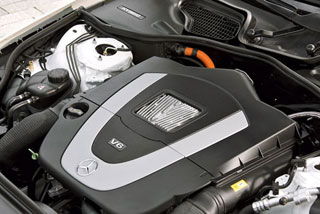
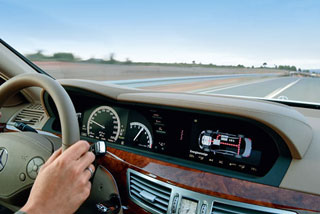
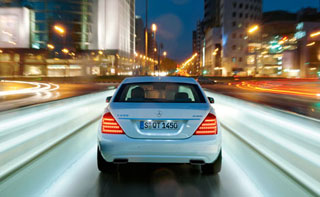
Technical characteristics of Mercedes-Benz S 400 Hybrid
Dimensions, mm
5096x1871x1479
Equipped mass, kg
1955
engine's type
gasoline v6 + electric motor
Working volume, cubic meter. cm
3498
Max. Power, L.S./rpm
279/6000 + 15 hp*
Max. moment, nm/rpm
350/2400-5000 + 160 Nm*
Transmission
automatic 7-band
Drive unit
rear
Max. speed, km/h
250
Acceleration time 0-100 km, with
7,2
Fuel consumption (average), l/100 km
Alexey Nizhenko
Photo of the manufacturer
Source: Avtopanorama magazine

